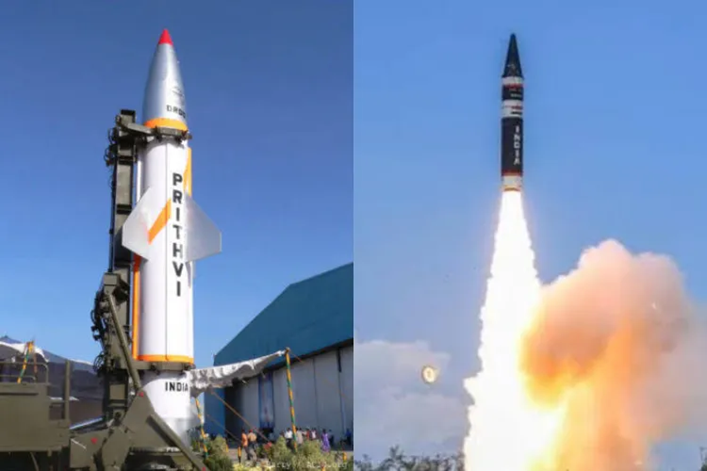India on Thursday conducted back-to-back test-firings of two short-range ballistic missiles—Prithvi-II and Agni-1—from its missile testing facility in Chandipur, Odisha.
India Successfully Test-fires Prithvi-II and Agni-1 Missiles
The successful trials come just over two months after the May military conflict between India and Pakistan, underlining India’s commitment to maintaining credible deterrence in the region and showcasing the readiness of its missile forces. The trials also follow the successful high-altitude interception test of the Akash Prime missile in Ladakh on July 16, 2025.
Specifications of the Missiles
| Missile | Type | Range | Payload Capacity | Warhead Type |
|---|---|---|---|---|
| Prithvi-II | Short-Range Ballistic | ~350 km | Up to 500 kg | Conventional/Nuclear |
| Agni-I | Short-Range Ballistic | 700–900 km | Up to 1,000 kg | Conventional/Nuclear |
Prithvi-II
- Developer: Defence Research and Development Organisation (DRDO)
- Range: Approximately 350 km
- Payload: Up to 500 kg; capable of carrying both conventional and nuclear warheads
- Role: Surface-to-surface missile integral to India’s nuclear deterrent.
Agni-I
- Developer: DRDO
- Range: Between 700 and 900 km
- Payload: Up to 1,000 kg; can deliver both conventional and nuclear warheads
- Role: Part of India’s trusted and tested nuclear deterrent, complementing longer-range Agni variants.
The Ministry of Defence stated that the launches “validated all operational and technical parameters” and emphasized that the tests were part of regular user trials conducted by the Strategic Forces Command, which oversees India’s nuclear arsenal.
“Short-range ballistic missiles — Prithvi-II and Agni-I — were successfully test-fired from the Integrated Test Range in Chandipur, Odisha on July 17,” according to an official statement by the defence ministry.
Both Prithvi-II and Agni-I have long served as critical elements in India’s missile arsenal, forming a core component of the nation’s strategic deterrence and its second-strike capability.



















